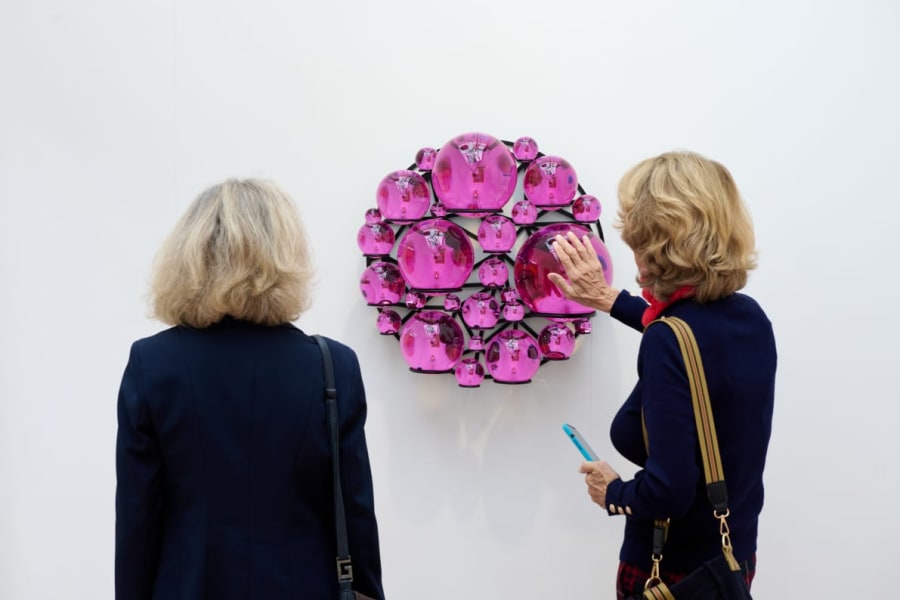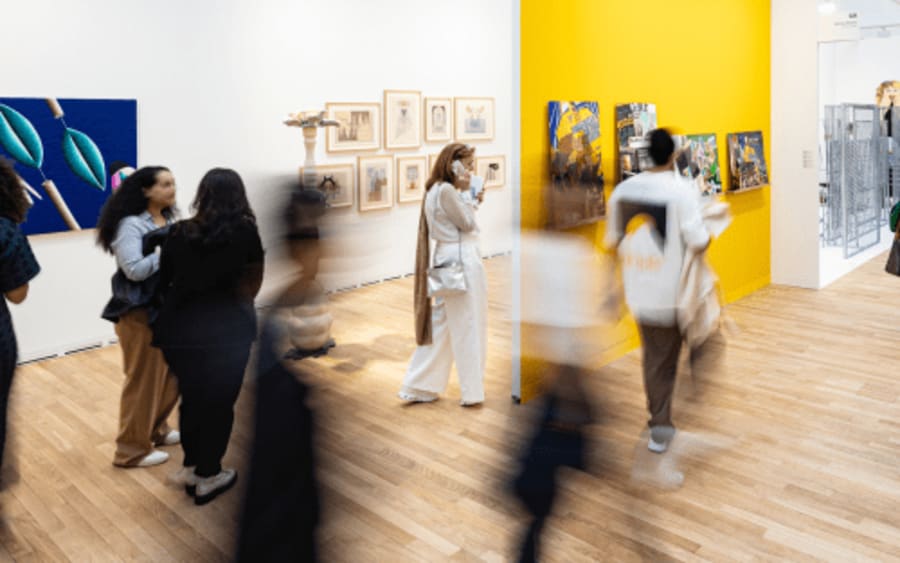This December will mark a defining moment for Art Basel Miami Beach, as the first-ever Gold Awardees of the Art Basel Awards will be unveiled during a landmark ceremony at the Frank Gehry-designed New World Center on December 4th, 2025. The culmination of a year-long process that began in Basel, Switzerland, the event will celebrate trailblazing figures across the global art ecosystem. Ahead of the ceremony, we asked five members of the nine-strong jury to share what, in their view, lies ahead for the world of art and culture writ large.
Hoor Al Qasimi, President and Director, Sharjah Art Foundation, Sharjah
Art has never followed a straight path; it moves, shifts, and responds to the world around it. The next breakthrough won’t come from a single medium or institution but from artists taking control of their own narratives, breaking away from restrictive structures, and creating work that is deeply connected to real experiences. We’re already seeing this happen as artists move beyond traditional exhibition spaces, finding new ways to collaborate, experiment, and challenge market-driven systems. The real change isn’t just in how art is made but in how it’s supported to build sustainable platforms where artists can work on their own terms.
Jessica Morgan, Nathalie de Gunzburg Director, Dia Art Foundation, New York
We are witnessing a convergence of social, environmental, and technological forces reshaping artistic practice. Artists are increasingly engaged with pressing global issues – climate change, digital culture, and new modes of connectivity – while also rethinking materiality, temporality, and authorship. This has led to a move toward more fluid, interdisciplinary practices that challenge the boundaries between artist, viewer, and medium, resulting in work that is both deeply personal and universally urgent.
Hans Ulrich Obrist, Artistic Director, Serpentine, London
The philosopher Roman Krznaric says one of the problems of our time is short-termism, and I think we need to get beyond short-term thinking. A lot of artists are very interested in the idea of long delay. They’re thinking about projects which extend past the time frame of an exhibition, a show, a biennial – any form of event – and they think about projects on which they work for many years, if not decades. It is very interesting for institutions to think about how to incorporate more long-duration thinking and how we can work with artists over a longer time period than just a standard exhibition. At the Serpentine, for our ‘Back to Earth’ project, we have worked with artists and artists’ campaigns related to the environment which can last several years.
Another clear breakthrough is what’s happening with art and video games. These projects are by necessity collaborative. Therefore, video games address the big challenges of the 21st century: the need to go beyond the fear of pooling knowledge. It’s important to connect the visual arts to music, literature, poetry, science. So perhaps they could become to the 21st century what the novel was to the 19th or what film was to the 20th. At the Serpentine, we’re very excited to be currently showing the work of fashion designer and artist Danielle Brathwaite-Shirley, who has collaborated with a bigger team including an architect, a stage designer, technologists, and many different practitioners.
Adriano Pedrosa, Artistic Director, Museu de Arte de São Paulo Assis Chateaubriand, São Paulo
One might say AI, but I would not! I believe we are still witnessing an increasing recognition of art beyond Euro-America, perhaps not so much in the contemporary arena, which I feel is much more integrated and does participate in the global discussion, but more so with 20th-century art – and this is how art history, or 20th-century art history, becomes so relevant for the contemporary!
Franklin Sirmans, Sandra and Tony Tamer Director, Pérez Art Museum Miami, Miami
The next breakthrough will be driven by deeper cross-cultural collaboration that expands how we experience and interpret creativity. Artists continue to blur the lines between disciplines and mediums, and new narratives are constantly emerging – especially from historically underrepresented voices – reshaping both the art world and its audiences. It’s less about fixed movements and more about fluid, inclusive innovation.
The Art Basel Awards jury comprises: Hoor Al-Qasimi, President and Director, Sharjah Art Foundation; Elena Filipovic, Director, Kunstmuseum Basel; the late Koyo Kouoh, Executive Director and Chief Curator, Zeitz Museum of Contemporary Art Africa (Zeitz MOCAA), Cape Town, and Curator, 61st International Art Exhibition (2026), La Biennale di Venezia; Jessica Morgan, Nathalie de Gunzberg Director, Dia Art Foundation, New York; Hans Ulrich Obrist, Artistic Director, Serpentine, London; Adriano Pedrosa, Artistic Director, Museu de Arte de São Paulo (MASP); Suhanya Raffel, Museum Director, M+, Hong Kong; Franklin Sirmans, Director, Pérez Art Museum Miami (PAMM); and Philip Tinari, Director and Chief Executive, UCCA Center for Contemporary Art, Beijing.
The Art Basel Awards are presented in partnership with BOSS.
Caption for header image: Art Basel Awards’ medalist pin, designed by Parisian jeweler Lorette Colé Duprat.
Published on November 14, 2025.


